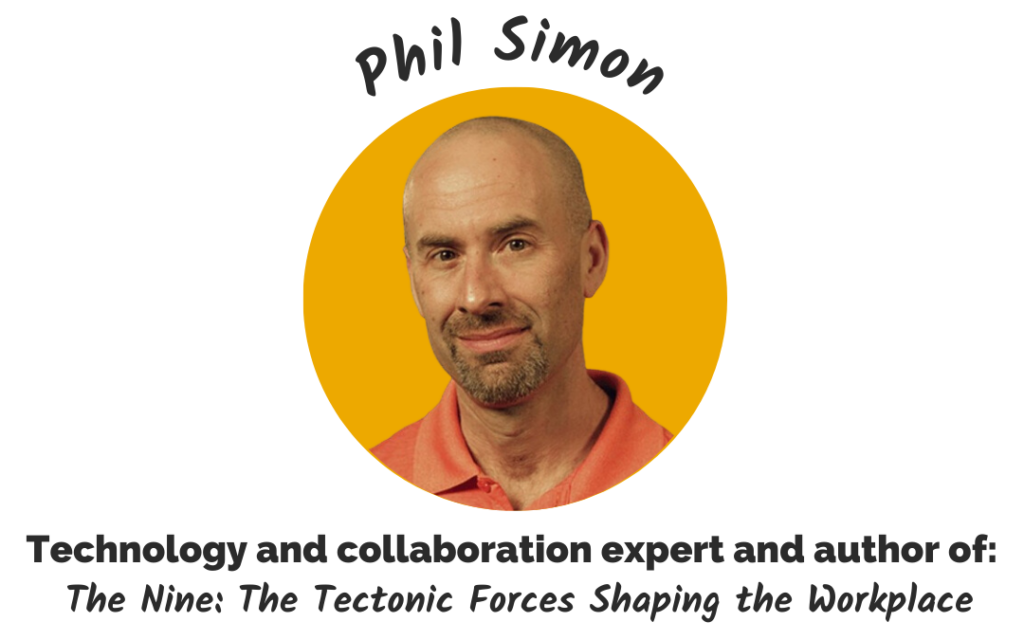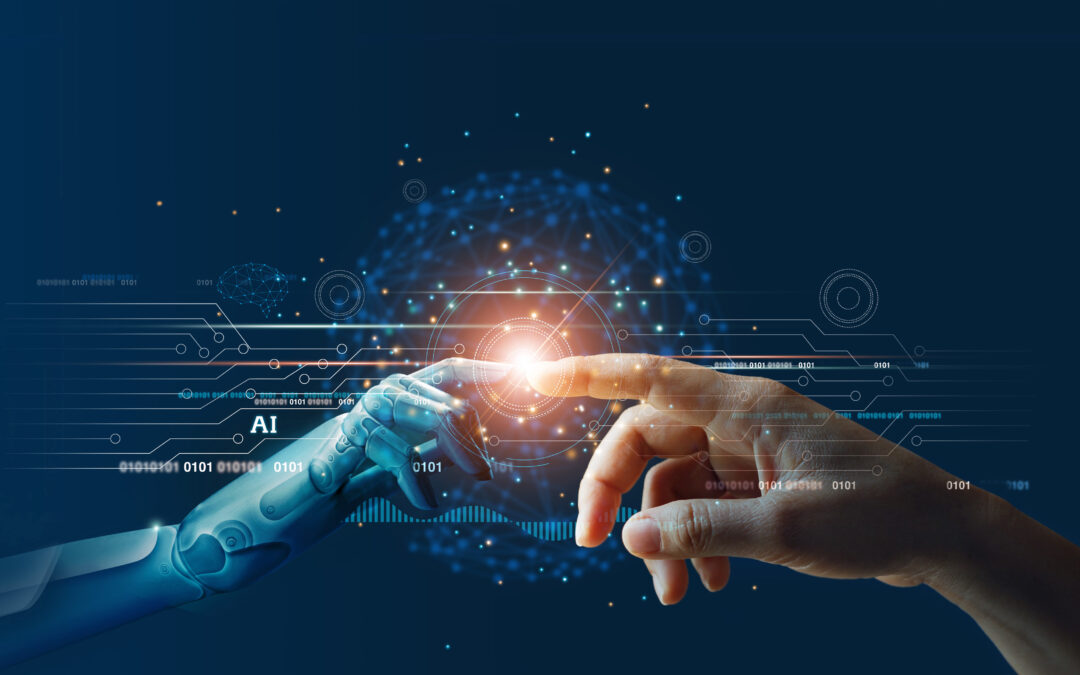In this episode of Transform Your Workplace, host Brandon Laws sits down with Phil Simon, technology and collaboration expert and author of The Nine: The Tectonic Forces Shaping the Workplace. Their conversation sheds some fresh light on worker engagement and productivity, burnout, the labor market imbalance, the power of AI, and the role of blockchain in creating boundaries amidst chaos.
GUEST AT A GLANCE
Phil Simon is a highly respected expert in technology and collaboration, renowned as a dynamic keynote speaker and award-winning author of 14 business books including The Nine: The Tectonic Forces Reshaping the Workplace.

A QUICK GLIMPSE INTO OUR PODCAST
🔊 Podcast: Transform Your Workplace, sponsored by Xenium HR
🎙️ Host: Brandon Laws
📋 In his own words: “The Transform Your Workplace podcast is your go-to source for the latest workplace trends, big ideas, and time-tested methods straight from the mouths of industry experts and respected thought-leaders.”
FORCES BEYOND OUR CONTROL
In our most recent podcast episode, guest Phil Simon highlighted the significance of inflation and its broad implications in the workplace and beyond. He believes that historically low interest rates influenced various aspects of the economy, such as expansion, commercial real estate, hiring, product development, and risk-taking behavior because “money was cheap.” But the days of cheap money are gone.
Inflation is just one of the many forces affecting today’s workplace. In his recent book, The Nine: The Tectonic Forces Shaping the Workplace, Phil Simon explores the vast and sometimes immeasurable forces that are changing the world of work. He acknowledges the challenge he faced in finding a suitable adjective for his book’s subtitle, ultimately settling on “tectonic” to convey the idea that the workplace is undergoing significant transformation and won’t revert to its pre-pandemic state. Phil added, “The workplace is really shaking underneath its feet.”
PODCAST EPISODE HIGHLIGHTS
The Theories Behind Engagement
“I just read recently — I think it was on LinkedIn — that worker engagement has been increasing, and it’s tough to isolate cause and effect because you’d have to do a proper experiment. But one of the hypotheses out there is that it’s because people have rebalanced, and now they can pick up their kid from soccer. They’re not getting home at eight o’clock at night. They’re not dealing with a two-hour commute. So I am fascinated to see how all this plays out because if in fact companies like Twitter with Musk mandate a return to work — and he’s not alone — will that cause workers to be less engaged and less productive?”
“One of the Bloomberg articles that I read in researching the book attempted to correlate the drop in productivity with a forced return to work. So people were so pissed off about having to get on a train or battle traffic for an hour and a half that when they got to the office, they were grumpy. So again, it’s tough to say that if you do this, then that will happen. The world just isn’t that simple.”
What Drives Burnout
“The numbers are amazing to me. I came across a stat — it’s in the book — I think it was an SHRM study. Don’t quote me on that. Something like 76% of workers experienced some degree of burnout. And when I read that, my natural reaction was, ‘Who the hell are these other 24?’ […] I could rant on this all day long. So a number of my books are about collaboration and different tools. I wrote both Slack and Zoom for Dummies, so some of it is not being able to find basic stuff.”
“Asana, the project management company, ran a survey slash report a few years ago called ‘The Anatomy of Work,’ and I think they subsequently updated it, but I remember one stat from it: something like 37% of the time employees were working on work. What does that mean? It means I’m trying to schedule time with you, and we’re going back and forth with messages. We’re not using a tool like Calendly. We’re trying to find documents because you use Zoom and I use Teams or you use Teams and I use Slack and, oh, what about email? Oh wait, we use text for that. Or it’s in Notion or another one of these no-code, low-code tools. So some of it’s […] also about what I’ll call ‘collaboration kabuki theater,’ right?”
The Imbalance of the Labor Market
“For a long time, things have been out of whack. When this book went to print, according to the Bureau of Labor Statistics, there were 1.7 job openings for every person. And remember that the unemployment rate doesn’t count people who aren’t looking for work, and something like 10% of males aged 25 to 54 have effectively stopped looking for work, right? They’re day-trading, they’re living with their parents, they’re living off savings, whatever.”
“If you look at the decline in birth rate, not just in the United States, but other industrialized countries like Japan and France, we’re not making people as quickly as we used to. And some of it is college debt. You’ve got immigration challenges. I think construction workers alone in the US — there’s a shortage of above 500,000. Now, I don’t wanna get into a whole political argument. The point is that there are structural things in the economy that don’t get fixed overnight.”
The Power of AI
“Now, if you look at it historically, there’s this Austrian economist, Joseph Schumpeter, who coined the term ‘creative destruction.’ Basically, new technology creates certain jobs, but in the process destroys others. […] It’s irresponsible of management to dismiss these outright because I do think they can do some things really well. I would argue, though, that it’s equally irresponsible to say, ‘Okay, we don’t need employees anymore.’ […] So the potential of these tools is amazing, but also the downside is flat-out scary.”
Creating Boundaries in the Chaos
“I don’t see how you write a book about the forces affecting the workplace without including, as far as I can tell, the best safeguard against complete chaos. And I’d argue that blockchain — it’s not the be-all and the end-all — but I don’t see how you get around using it. And I’d rather know about it as a potential solution than not know because the dangers of Generative AI, I think, are so significant if left unchecked.”
“[…] There was a study that dropped about three years ago that showed that fake news stories spread I think it was six times faster than real ones. So again, just because you’re using blockchain doesn’t mean that bad things still can’t happen. Of course, they can. You have to read the label, so to speak, but at least it’s there for the discerning viewer. From my perspective, companies at least need to be aware of these things. If they wanna ignore them, fine. I can’t stop them.”
LEARN MORE
Grab a copy of Phil Simon’s latest book, The Nine: The Tectonic Forces Shaping the Workplace, on Amazon or wherever books are sold.
